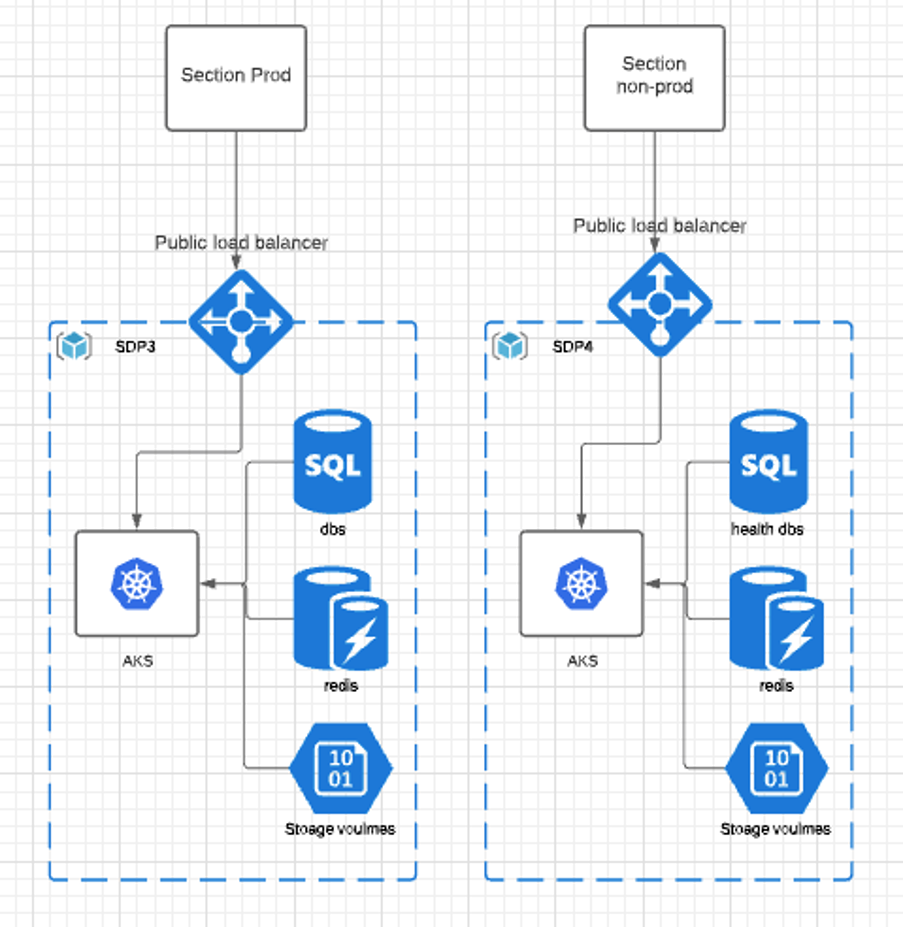
On this page:
At a glance
2022
2 to 4 months
Completed
Drupal, Single Digital Presence, LAGOON
State government
Build & migration, Hosting & maintenance, Support & optimisation, Technical advisory
GovTech, Whole of government, Open source, Web development, Headless CMS, Open platform, Content management systems
Multidisciplinary teams, Agile delivery, Tools & systems, Security, Open standards & common platforms, Open source, Measure performance
Overview
SDP’s challenge
Victoria’s Single Digital was migrating from OpenShift AWS to Microsoft Azure . However, with production and development websites on one cluster, production sites’ performance could sometimes be affected by high activity on development websites. In addition, the platform’s ability to scale down (and save money) wasn’t being maximised.
SDP’s transformation
Salsa and worked with to create two separate clusters — production and non-production. Now all SDP production sites are on a separate cluster to development sites. We also upgraded the database to Azure’s Flexible , a more resilient database service.
The outcomes
Improved reliability and performance of live/production websites
Cost savings through the ability to scale down, using less nodes overall and less powerful nodes for non-production sites
Full case study
Below is more information on the challenge, transformation and outcomes.
SDP’s challenge — competing workloads
Victoria’s Single Digital was migrating from OpenShift AWS to Microsoft Azure . While that project was driven by OpenShift 3 coming to end-of-life (and moving to OpenShift 4 would have been quite a big task), it also presented an opportunity to improve the SDP cluster architecture.
The SDP was built with a scalable architecture. This means when demand is low, some servers could be scaled down or idled, which ultimately reduces costs. However, with both production and development sites running on one cluster the ability to significantly scale down was limited. In addition, if development sites were very active, sometimes the performance on production sites could be impacted. In computer science we call this the ‘noisy neighbour’ effect. If neighbours are taking up a lot of bandwidth (creating noise), this impacts you (your site).
There was an opportunity to improve the architecture by splitting the production and non-production sites into separate clusters.
We drafted a project plan for SDP’s review. The proposal also coincided with some recent changes to Azure, and the project plan included using Azure Flexible and Terraform support for Flexible Server.
SDP’s transformation — separate clusters
After our proposal was approved, Salsa worked with (our platform partners) and key SDP staff to complete the cluster optimisation and to ensure sites were cleaned-up or migrated with little or no impact on end-users.
The work was broken into 5 main stages:
- Planning and costings — to fully scope and cost the project
- Migration preparation
- Cluster provisioning
- Migration
- Post-migration tasks
We migrated fixed non-production environments (e.g. develop and master) as there are other parts of the platform that rely on being able to route to the project (CDN) and it was simpler if we handled the whole process for those environments. PR environments were not migrated and were left to developers to recreate as required.
The new architecture can be seen in the diagram below.
The migration effort was quite involved from a project management perspective, with content freezes required while sites were being migrated from the old cluster to one of the new clusters. It was also quite involved technically, with many discrete steps required. To help reduce risk and streamline the migration process, we created migration scripts to automate as much of the process as possible. This reduces the time taken for migration and increases the reliability of the migration process.
During the cluster architecture we also upgraded the database to Azure’s Flexible , a more resilient database service.
The outcomes — a better platform
- More predictability and consistency in the workloads in the production cluster so we can tune the resources better (one benefit of that is improved performance)
- Improved performance of live government websites (due to the workload changes in the production cluster)
- Cost savings via a dedicated development cluster that can be scaled-down or idled when not in use
About SDP
Victoria’s Single Digital is the whole-of-government digital platform run by Victoria's Department of Premier and (DPC). DPC is responsible for several elements of Victoria’s digital engagement, including SDP, , and .
